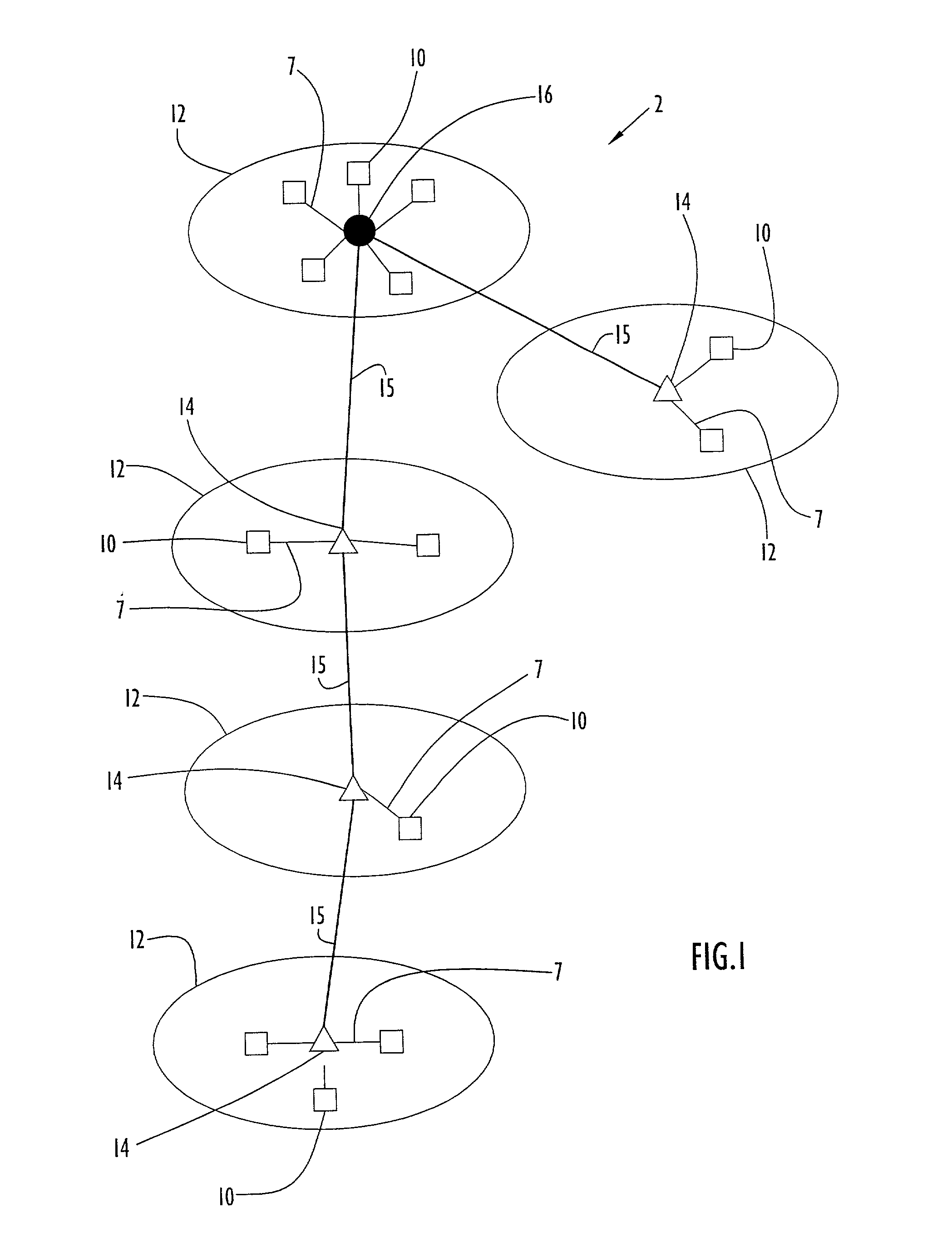Method and apparatus for on demand multicast and unicast using controlled flood multicast communications
a multicast communication and control flood technology, applied in the field of data communication networks, can solve the problems of significant overhead traffic, unpredictable routing, and increased overhead traffic, and achieve the effect of efficient routing both unicast and multicast traffic, facilitating collection and distribution, and efficient distribution
- Summary
- Abstract
- Description
- Claims
- Application Information
AI Technical Summary
Benefits of technology
Problems solved by technology
Method used
Image
Examples
Embodiment Construction
[0046]Preferred embodiments according to the present invention are described below with reference to the above drawings, in which like reference numerals designate like components.
Overview
[0047]New on-demand routing techniques described here, and referred to collectively as Controlled Flood Multicast (CFM), distribute both unicast and multicast traffic in dynamically mobile, wireless, ad-hoc networks. A first set of techniques, efficiently collects and uses network topology information to build and dynamically maintain a mobile, wireless, ad-hoc network. A second set of techniques uses new on-demand routing methods to distribute both unicast and multicast traffic within the dynamically maintained network.
[0048]To route multicast traffic, a CFM communication node uses a controlled-flood technique to dynamically determine whether it should rebroadcast a flooded message based upon the present state of internally maintained network topology information. In this manner, the controlled fl...
PUM
 Login to View More
Login to View More Abstract
Description
Claims
Application Information
 Login to View More
Login to View More - R&D
- Intellectual Property
- Life Sciences
- Materials
- Tech Scout
- Unparalleled Data Quality
- Higher Quality Content
- 60% Fewer Hallucinations
Browse by: Latest US Patents, China's latest patents, Technical Efficacy Thesaurus, Application Domain, Technology Topic, Popular Technical Reports.
© 2025 PatSnap. All rights reserved.Legal|Privacy policy|Modern Slavery Act Transparency Statement|Sitemap|About US| Contact US: help@patsnap.com



